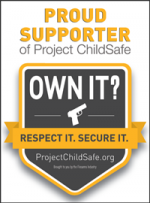He’s right. The NRA’s real strength is its ability to mobilize voters – to get them off of their couches and to the phones, to meetings and rallies, to letter writing and e-mailing, to leafleting, and to the voting booth. While 90 percent of Americans may support expanding background checks to the Internet and gun shows, getting them to act is something else entirely.And, that 90 percent isn't really 90 percent when you dig a little deeper.
The article also repeats another myth - that less people own firearms than did in the 1970's and that is what the Monitor points to as possibly why Everytown may have long term success:
Everytown leaders say yes, and the trend lines are on their side, according to the General Social Survey by NORC, a research center at the University of Chicago. A New York Times analysis of the survey data shows the share of American households that have guns declining from 50 percent in the 1970s to 34 percent today, though the NRA contests the figures.It's not like the NRA is not working to reach out to those changing demographics. I'm betting those who say a large number of gun owners aren't going to tell a stranger on the phone they own firearms, regardless of whether they identify themselves as working for a pollster, are right. All you have to do is a simple Internet search and you will find articles about the increased demand trainers see in their firearm classes. I'm thinking that's not driven by people who are long time gun owners.
"Demographics work against gun ownership," says Professor Spitzer.








No comments:
Post a Comment